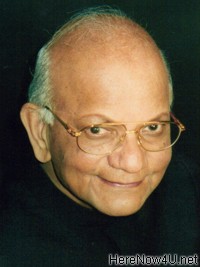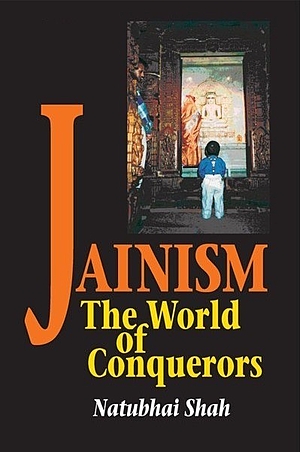The soul, self, spirit or life force forms a central core of a religion. It is an active, energetic and conscious entity. Two types of souls have been postulated by Jain philosophy: the ideal, pure, disembodied or liberated; and the real, impure, embodied and bonded by karma. There are other classifications based on gradations of spiritual progress. Jain scholars give the analogy of gold dust and say that just as gold is found in the mines, mixed with dust, similarly, the souls have always existed in a world permeated by karma, as worldly souls. They further refer to pure gold being obtained from the mixed dust by the purificatory processes; similarly, the worldly soul is purified into a pure soul by the spiritual practices, preventing the influx of new karma and the shedding of the attached karma. Jains believe that worldly souls have existed eternally due to karmic bondage and that there is no creator such as the Supreme Being for this world and its inhabitants. Hence the explanation as to how the pure (ideal) soul turned into a worldly (real) soul is irrelevant and not found in Jain scriptures. The goal of human life is to turn the real soul into an ideal or pure soul by shedding karma.
The nature of the soul
Many philosophies have discussed the nature of the soul as either material or ideal. The materialistic view identifies the soul either with the body or with the sensory organs. Some commentators have suggested that the mind is the soul; some have even suggested that the soul is identical with the psyche (prajnaa). The mind and sensory organs cannot function in the absence of the psyche. The psyche or the soul has been identified as the agent of cognition. Cognition by the mind or the senses is only possible if there is cognisance. Meditation on the soul leads to the concept that the soul is a non-material and spiritual substance. The soul cannot be grasped by the senses, but it is possible to know the soul, if we transcend sense-experience and progress to direct experience.
The Buddha described the self as an aggregate of physical and mental states. Physical and mental states are constituted through cognition, affective states and psychic energy. The momentary character of the world as seen by the Buddha denies the existence of an enduring soul. The Buddha did not, however, accept the materialistic conception of the soul, but recognised the soul itself as consciousness and gave it an important place in his teachings.
The Upanishads and the Bhagavad Gita indicate that the soul is to be differentiated from the body, the psyche or the mind. The soul pervades the entire universe, but it is indescribable.
The Hindu philosopher saint Sankarcharya believed Brahma, the creator and supreme god, and the soul to be identical. Another Hindu thinker, Madhavacarya believed Brahma and the soul to be not mere appearances, but both to be equally real. The Sankhya and Nyaya-Vaisesika schools also affirm the independent reality of the soul quite distinct from matter (Devendra Muni 1983: 98-102).
The Jain theory of the soul is rational, and is said to have been crystallised during the period of Parsvanatha (eighth century BCE), since then the theory has remained unchanged. The Jain tradition describes the nature of the soul in ideal and empirical terms. From the point of view of its essential substance it is eternal; from the point of view of modification, the soul is contingent. The ideal soul is formless, indestructible, beyond measure and cannot be known by the senses. It is all-pervasive with respect to the fourfold infinities: faith, knowledge, bliss and energy. The soul can become independent of the body, although due to its characteristics of expansion and contraction the soul pervades the body that it occupies whether large or small. Its fundamental nature and its number of space-points are not affected by such bondage.
The formless soul acquires a body because of its karmic bondage and through this body it takes apparent form. Through its activity in the empirical world it accumulates further karma, unless it progresses on the spiritual path of liberation. When the soul relinquishes one body, it takes with it the subtle luminous and karmic body and forms another body in the next life.
Practically all worldly souls have the same capacity for spiritual development. Yet each one develops in different ways due to the attachment of differing types and quantities of karmic particles, but it has potential of being liberated by self-effort through the process of arresting further karmic attraction, and shedding attached karma.
The soul and modern science
Some scientists do not distinguish between mind and soul. They consider mind as an expression of the workings of the brain. Other scientists believe that everything can be explained, including mind and thought, through the operation of physical bodily processes. Jains believe that the mind is both material and non-material, the physiological basis is material and the psychic functions are non-material.
Mental states are not physical. The body influences mental states, but mental states are not physical states, and some scientists have emphasised this qualitative distinction between mental and bodily states. Modern scientists are not clear about the nature and relationship between mind and body; they have not been able to explain psychic states and their relationship to cerebral functioning.
The phenomenal progress of science in the modern age has only been possible because of the functioning of psyche (soul or spirit), which is distinct from the brain, the bodily organ, although the body is a necessary instrument. Science is not clear about how the body, i.e. the brain, generates past impressions or memories.
According to one scientific view, life cannot be produced from inert objects. The life force is real, independent and without a beginning. According to another view, life can be generated from inanimate objects. Marxist theory maintains that the psyche is the qualitative transformation of physical objects, as water is transformed into vapour or ice, so the psyche is produced from changes in physical objects. Marxists have not been able to answer the question: at what stage does consciousness arise and what is its original nature?
Concept of god among Jains
The Jain concept of the ideal soul is associated with goodhood, and Jainism believes in the potential of all to realise it. It does not support the monopoly of godhood by a single Supreme Being or god; hence some Western theologians regard the Jains wrongly as atheists.
Religions have developed concepts of monotheistic or pantheistic gods (with different names in different languages and religions) out of earlier notions of polytheism. The majority of the world's population follows a number of monotheistic religions, because of their psychological acceptance. The early literature of most Indian philosophies indicates that their atheistic character was later modified into monotheism. Polytheistic Hinduism has gained worldwide importance through its monotheistic variant Vedanta. Some Western philosophies believe that the concept of a god as the creator, destroyer and maintainer of the world, and all-powerful judge associated with qualities such as omniscience, omnipotence and transcendence, does not stand logical scrutiny.
Jainism does not accept a god as creator or ruler, but it does accept that other qualities attributed to god are attainable by all human beings, through their own efforts through shedding karma. The liberated state of the soul is called the 'supreme soul' (paramaatmaa, arhat or siddha), having the highest qualities of the four-fold infinities. Jains accept that practically every human being can attain the attributes of a god, and they venerate tirthankaras, omniscients and liberated souls as supreme souls or gods. For the Jains, the godhood represents a qualitative character and they believe that all liberated or ideal souls are gods, in contrast to the belief in a single creator god. Jainism encourages all human beings to strive for godhood through following the path of Right Faith, Right Knowledge and Right Conduct. However the godhood is never attainable by divine grace, but only attained through an individual's own efforts.
 Dr. Natubhai Shah
Dr. Natubhai Shah
